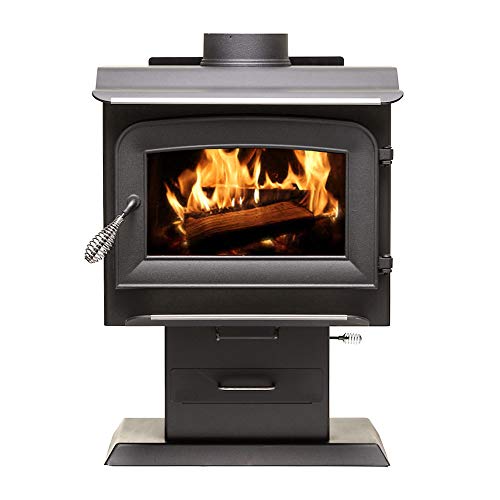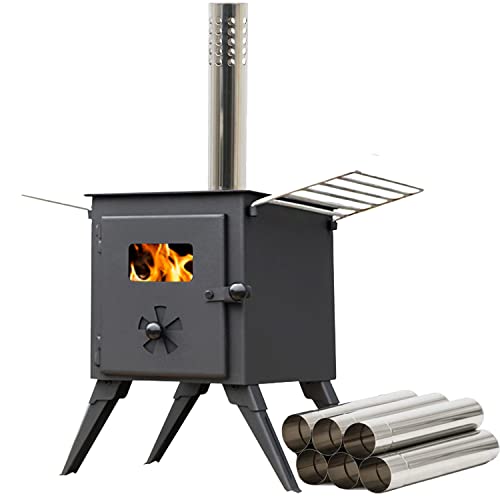10 Basics About Wood Burning Stoves You Didn't Learn In School
페이지 정보

본문
 wood burning stoves near me (click through the next document)
wood burning stoves near me (click through the next document)Wood stoves are a beautiful and efficient method of heating your home. But, there are a few things to consider when purchasing a new stove. Included in this are EPA-certified energy efficiency and cost, as well as maintenance requirements.
Be cautious not to become "number bound" and make a decision solely based on a certain rating or BTU output. Also, take into consideration aesthetics, recommendations by an established retailer, and customer feedback.
Cost
Wood stoves can add a classy and elegant touch to any house. They come in a vast selection of styles and colors to complement any decor. They are also energy efficient and economical they can be a great alternative to costly heating systems. However, there are a few aspects to consider when buying a new wood stove. Included in this are the initial cost, installation fees, and any extras, such as chimney liner.
The cost of a wood stove will depend on the model and size you pick. There are freestanding stove for less than PS700. The stove features a huge viewfinder that is kept clean with a powerful airwashing system. It is also multi-fuel, meaning you can burn different types of fuel.
Noncatalytic wood stoves are less expensive than catalytic ones, however they can be difficult to ignite and require more fuel to generate the same amount of heat. They also release more particles into the air than catalytic stoves. Despite these limitations the noncatalytic stove is an excellent choice for a lot of users.
Pellet stoves are another popular alternative to wood burning stoves. They are like wood stoves, however they use smaller pellets made from recycled materials or wood. They are easier to maintain, but they don't produce the same amount of heat.
Whether you're choosing a pellet or wood stove you'll have to take into account the cost of installing venting systems. Most wood stoves must have an air vent system that connects to a chimney, whereas some require an outside combustion air intake. You may have to get your wood stove inspected by local building inspectors based on where you live and the building codes in place in your region.
If you're installing a wood stove into an existing fireplace, you'll be able to spend less money on installation. You'll need to install a chimney liner and you may have to employ someone to clean the chimney periodically. In addition that a freestanding contemporary wood burning stoves stove cannot reach all rooms in an apartment with multiple floors, so you'll need to put in radiators in other areas to supplement the heat.
Energy Efficiency
The cost of electricity and gas is rising many homeowners are searching for alternatives to heating their homes. Wood stoves are among the most popular alternatives to traditional heating systems due to the fact that they provide a low-cost and sustainable source of heating. They also burn cleaner, reducing the amount of air pollution.
Modern wood burning stoves feature the highest energy efficiency, which means that they can provide more heating for your home with less fuel. This is due to the fact that modern wood burning stoves have smaller combustion chambers compared to older models. They also have a catalytic combustion chamber that burns fuel more efficiently. They also produce fewer harmful emissions, which is crucial for those who reside in an area that is required to comply with stricter air quality standards.
Log burners are also eco-friendly since they let you control the amount of air that is supplied to your fire. This allows it to burn at a lower temperature for longer. This reduces the amount of smoke produced by the fireplace and also prevent the buildup flammable creosote inside your chimney.
Burning a variety of different kinds of wood, including scrap and reclaimed wood will result in a more efficient fuel mix, which will reduce the amount of carbon dioxide produced by the fire. You can also collect unwanted timber that has been removed from construction projects and burn it in your stove. You can save money on firewood by doing this.
Wood is a carbon neutral fuel due to its renewable resource. The trees absorb carbon dioxide during their growth and release it when they burn, creating an ecological cycle of living. By using local wood sources, you can also contribute to the local economy and reduce the environmental impact of your business.
Another benefit of having a wood-burning stove is that it can serve as an alternative source of heat in the event of a power outage. You can keep your house warm for a few days by storing enough logs. You can use your stove to cook and heat water.
Environmental Impact
The burning of wood in a stove can result in negative effects on the environment and your health, depending on how well it is completed and the type of garden wood burner you are using. The combustion of wood releases harmful gases, such as carbon monoxide and nitrogen oxides, and fine particulates, referred to as PM (particulate matter). The PM in smoke is composed of a range of dangerous substances that include black carbon, tar and soot. These pollutants have been linked to a number of health issues which include respiratory diseases and heart disease.
The emissions from wood burning stoves are harmful to the environment and health. Wood burning can also release volatile organic compounds (VOCs) which are a major Wood Burning Stoves Near Me source of VOCs in indoor environments. VOCs are a form of pollutant that has been linked with a range of health issues, including headaches and eye irritation.
VOCs can cause harm to the lungs, respiratory system and circulatory system. They can also cause a number of environmental problems such as erosion of soil and biodiversity loss, as well as water quality. In certain areas, the levels of VOCs found in wood smoke may be higher than federally enforced standards.
According to a report by Undark Five states have offered incentives to replace older wood-burning stoves with EPA-certified models. However, the majority of these appliances are only marginally better than the older models. They're also expensive and require electricity to power the controls, Wood Burning Stoves Near Me fans, and pellet feeders.
Consequently, some environmental agencies have resorted to removing incentives to promote new wood stoves, in favor of encouraging people to switch to alternative sources of heat. The State of Oregon, for example requires homeowners to get rid of wood-burning stoves that are not certified and encourages them to heat pumps.
Wood stoves are energy efficient compared to other heating methods, such as gas or electric furnaces. These stoves produce a greater quantity of heat, using less wood than gas or electric counterparts. They are therefore more sustainable and a cheaper choice for home heating. However, they should be maintained and inspected regularly to reduce the amount of fuel required and increase efficiency. For instance, removing unused hoppers and feed systems at the end of the season can reduce rust and ensure that the stove is ready to go again in the fall. In addition, regular cleaning of the stove's flue vent will help prevent the buildup of flammable creosote.
Safety
Wood burning stoves are a great alternative to heat, however they are also risky for your family's safety. The smoke from fires can cause inhalation and carbon monoxide poisoning. However, you can protect your home and family by following the correct safety precautions.
Make sure your stove is correctly installed and vented. A certified professional should install your chimney, flue pipe, and the connectors. The chimney should be at least three feet above any objects that could ignite. This includes trees that are overhanging or buildings that are adjacent. Install smoke and carbon monoxide (CO) detectors in each bedroom and on every level of the home and connect them so that they all sound when one is activated. Check your alarms regularly and replace batteries. Keep flammable substances, such as plastics, paper, and trash, away from the stove, and don't burn them in it or near it.
Never leave a wood-burning stove unattended, particularly at night. If the stove is in a room with sleeping areas, close off the wood-burning heat and open windows before you go to sleep. This will stop wood smoke from entering your home and causing CO poisoning.
Install an air-cleaning device if you intend to use wood stove. These systems work to capture and neutralize volatile organic compounds from the exhaust stream before it leaves the fireplace. Keep your stove clean and keep the draft louvers, the grate and draft hoods free of ash.
Wood smoke is hazardous to everyone however it is especially hazardous for children and adults with weak lung. It can also trigger respiratory illnesses and asthma. Avoid using wood stoves on days when pollution levels are high. The EPA and each state provide daily reports on air quality.
New wood stoves may be more efficient than older models, but they still emit large amounts of pollutants into the air. Choose a model that has been endorsed by the EPA as being more than 72 percent efficient to limit the amount of pollution you are exposed to. Also, burn only dry, seasoned wood. This type of wood produces less toxins and has more energy than fresh, green wood.

- 이전글15 Of The Best Pinterest Boards Of All Time About Double Glazing Firms Near Me 24.04.28
- 다음글15 Terms That Everyone Who Works In Wood Burners Industry Should Know 24.04.28
댓글목록
등록된 댓글이 없습니다.
